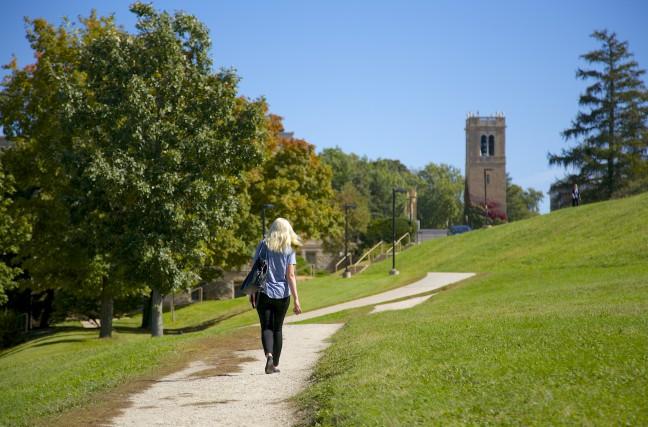According to a new study by state researchers, the color green should no longer be associated with envy, but with happiness.
The study, which involved collaboration with University of Wisconsin researchers, focused on how green space impacts mental health across the entire state of Wisconsin.
Results showed people who live in neighborhoods with more tree canopies and green space were less likely to feel depressed, anxious and stressed, Kristen Malecki, a UW professor of population health sciences and a senior author of the study, said.
“Going into nature and going into natural areas allows us to sort of rejuvenate and restore,” Malecki said.
The findings in the study support the attention restoration theory, the idea that being out in the natural environment settles one’s nerves and reduces anxiety and stress.
In the future, Malecki said city planners could potentially use green space as a cost- effective method for improving overall mental wellness.
“Green space might be a really cost-effective, easy way to make people happier in those environments without them even knowing it,” she said. “It has all sorts of co-benefits, too, such as reducing carbon emissions and cleaning the air.”
One finding the research identified was that people’s perceptions of their environment are more important rather than the actual physical green features of that environment, Malecki said.
In contrast to mentally healthy individuals, the research found that depressed individuals are less likely to notice positive green areas in their neighborhood than a casual observer, she said.
“There’s more of a disconnect between what [depressed young people] see versus what an outsider would observe in that neighborhood,” Malecki said. “If there are positive things like green space in your neighborhood but you’re not going out there to expose yourself to them, then you’re going to increase your likelihood of being depressed.”
The next step for the research is looking at whether the type of natural space makes a difference, Malecki said. They plan to look at blue space and whether individuals surrounded by blue space, like open skies and large bodies of water, have a different response than those who live near green space, she said.
Greta Guenther, a psychiatric nurse at UW’s mental health clinic, said depression and anxiety have multiple causes among students.
According to Guenther, causes for anxiety and depression among students range from family changes and trauma to excessive alcohol and marijuana use.
A 2011 study conducted by the American College Health Association found that about 30 percent of college students nationwide reported feeling “so depressed that it was difficult to function” at some time in the past year.
In addition to clinical depression and anxiety, some college students suffer from seasonal affective disorder, Guenther said.
SAD is described as a pattern of depressed mood that is related to the changing season typically in the fall or early winter. It looks like clinical depression but tends to go away when spring comes around, Guenther said.
Continued research will help determine if nature is making the difference in people’s moods or whether it is the actual green or blue space that affects people, Malecki said.


